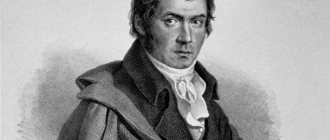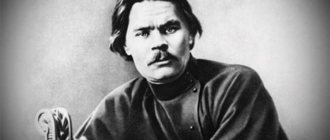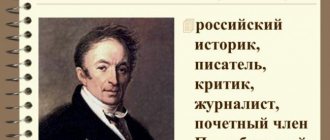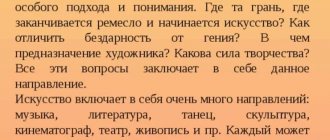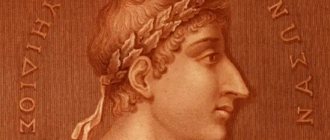Life is short, art is forever
From Latin: Vita brevis, ars longa
[vita brevis, are longa].
From a famous saying that belongs to the great ancient Greek thinker, naturalist, great doctor, founder of modern medical ethics, Hippocrates
(460-370 BC).
When he spoke of “art,” he did not mean artistic creativity, but the art of healing. And the meaning of this comparison is that the art of healing is so complex, it requires so much knowledge that it would not be enough to comprehend it throughout a human life. “Hence,” explained the Roman Stoic philosopher Lucius Annaeus Seneca in his essay “On the Brevity of Life,” “the famous exclamation of the greatest of doctors that life is short, but art is long.”
In the original, Hippocrates' thought goes like this: Life is short, the path of art is long
(another translation:
science is immense), chance is fleeting, experience is deceptive, judgment is difficult.
Therefore, not only the doctor himself must use everything that is necessary, but also the patient, those around him, and all external circumstances must contribute to the doctor in his activities. The expression became popular after J. V. Goethe repeated it in his tragedy “Faust” in the following form: “Art is durable, but our life is short.”
Usually used in the sense: the artist, the creator dies, but the fruits of his hands, the creations of his spirit, mind, art live forever, and thereby they preserve the memory (remind) of the person who created them; the master lives in his creations.
Life must be lived in such a way that there is no excruciating pain from wasted years.
From the novel (Part 2, Chapter 3) “How the Steel Was Tempered” (1932-1934) by Soviet writer Nikolai Alekseevich Ostrovsky
(1904-1936): “The most precious thing a person has is life. It is given to him once, and he must live it in such a way that he is not painfully ashamed of the years spent aimlessly, so that the shame of his petty and petty past does not burn, and so that, dying, he can say: all his life and all his strength were given to the most important thing in the world: the struggle for the liberation of humanity. And we must hurry to live. After all, an absurd illness or some tragic accident could interrupt it.
Overwhelmed by these thoughts, Korchagin left the brotherly cemetery.”
Quoted as a call to a dignified, active life.
Life begins after forty
From English: Life Begins at Forty.
Book title (1932) by Walter Pitkin
(1878-1953). There is another translation option: “Life begins at forty.”
The popularity of the expression was facilitated by the American singer Sophia Tucker, who performed a song with the same name (the song premiered in 1937).
Life after life
From English: Life after Life.
From the title of the book (1975) by American resuscitator Raymond Moody
(b. 1944) - “Life after life: a study of the phenomenon of the continuation of life after the death of the body.” He wrote it based on the stories of his patients who experienced clinical death and were brought back to life.
Allegorically: 1. About the hypothesis of afterlife existence. 2. About the continuation of life in one form or another (deeds, works of art, etc.).
Life is Beautiful and amazing
From the poem “Good” (1927) by Vladimir Vladimirovich Mayakovsky
(1893-1930):
Joy is flowing.
Not for you / should we spare it?!
Life is Beautiful and amazing.
Life is wasted in worries about bread
From the poem “Merry childhood, children's dreams...” (1858) by Ivan Savvich Nikitin
(1824—1861).
Allegorically: an expression of regret about the time it takes to solve material problems, about the lack of it for creativity, making dreams come true.
Lived honestly, worked for a whole century / and died as a goal as a goal was born
Epitaph on the monument to the Russian poet-fabulist Ivan Khemnitser (1745-1784), which belongs to the pen of the poet Vasily Vasilyevich Kapnist
(1758-1823).
Ivan Ivanovich Khemnitser
himself wrote at one time He lived in an honest manner, he worked all his life,
But he died as naked as he was when he was born.
Allegorically: 1. About a non-covetous, unmercenary person who lived by spiritual interests. 2. About a poor man who was never able to get any richer in his entire life.
It is impossible to live in society and be free from society
From the article “Party organization and party literature” by V. I. Lenin
(1870-1924): “...After all, this absolute freedom is a bourgeois or anarchist phrase (for, as a worldview, anarchism is bourgeoisism turned inside out. It is impossible to live in society and be free from society. The freedom of a bourgeois writer, artist, actress is only disguised ( or hypocritically disguised) dependence on the money bag, on bribery, on maintenance..."
Allegorically: 1. About a person’s dependence on public opinion. 2. About human civil liability.
Living in general is harmful
The original source is a phrase from the Polish writer Stanislaw Jerzy Lec
(1909-1966) from the collection of his aphorisms “Uncombed Thoughts” (1957): “Living is harmful. People die from this."
Living means thinking
From Latin: Vivere estcogitare
[vivare est kogitare].
Words of the Roman statesman, writer and orator Cicero
(Marcus Tullius Cicero, 106-43 BC): “There are many and varied ways to enjoy mentally. I’m talking about a reasonable and educated person, for whom living means thinking.”
The meaning of the expression: a life worthy of a person is, first of all, his spiritual, intellectual life.
Don't live by lies
The title of an article written in the form of an appeal to the Soviet intelligentsia and youth (February 12, 1974) by the writer Alexander Isaevich Solzhenitsyn
(b. 1918), which became one of the main reasons for his expulsion from the USSR (1974).
A.I. Solzhenitsyn, addressing his audience, proposed the most accessible, in his opinion, way to fight the regime: “...The most accessible key to our liberation: personal non-participation in lies! Let the lie cover everything, control everything, but let us insist on the smallest things: let it rule not through me!”
In this article, the writer called on every writer and creative person to act so that not a single phrase “distorting the truth” would come from his pen, not to express such a phrase either orally or in writing, not to quote a single thought that he sincerely did not shares, not to participate in any political actions (demonstrations, etc.) that do not correspond to his wishes, not to vote for those who are not worthy of being elected, etc.
Before perestroika, this article was distributed illegally. Its first legal publication in the USSR took place in 1989 in the bulletin of the Soviet Peace Committee “The 20th Century and the World” (No. 2).
Allegorically: to live in accordance with self-esteem, with the principles of truth and justice.
Vita brevis, ars longa (life is short, art is long lasting)
“Real medicine is based in the clinic,
in prolonged contact with the patient,
on understanding it, on research and
recognition of his entire being"
(A. Paunescu-Podeanu, “Difficult Patients”, 1976)
Instead of an introduction
After the first summer holidays, full of strength and health, I continued to master various sports along with my studies. This was facilitated by living in a hostel on the street. Mayakovsky, no. 11. There was a gym on the third floor at Mayakovka. Training and competitions were constantly held there. Gymnastics, basketball, volleyball, fencing, etc. “didn’t work.”
I went to gymnastics to “cheer” on my classmate, Farid Bakhtiozin. Short, agile. He is the same today at 80 years old, a famous associate professor, pediatric traumatologist.
The team of basketball players was extremely popular. The battle cry still rings in my ears: “Zula, come on!” Zulkarneev Renat (later Doctor of Medical Sciences, Professor, Head of the Department of Traumatology, Orthopedics and Military Surgery of the Kazan State Medical Institute), Muslimov Mars (later a military doctor), Abdrashitov Marat (later also a military doctor), Mirotvortsev Yulian (later a doctor -narcologist), Albert Akhmetov (later surgeon, MD, employee of the A.V. Vishnevsky Institute) and, of course, the permanent captain Eduard Sitdikov (later academician of the ANRT, MD, professor , Head of the Department of Urology, KSMI). This team performed very successfully in student competitions at various levels. In 1953, she won first place in the student basketball championship, becoming the champion of the USSR. According to Renat Zulkarneev, he threw the winning ball into the basket a few seconds before the end of the final match with Rostov students.
Mendelevich David (future Doctor of Medical Sciences, Professor, Head of the Department of Psychiatry at KSMI) was remembered in volleyball.
In fencing - of course, German Bazarevich (later Doctor of Medical Sciences, leading employee of KNIITO).
And the most mysterious and inaccessible was figure skating, in which the leader was Yusupov Fauzey (later Doctor of Medical Sciences, leading employee of KNIITO, author of numerous patents). He compiled a wonderful photo album about the history of figure skating in Kazan, which is stored in the office of the head of the physical education department of KSMU, Professor Rashit Bilalovich Sagdeev.
I settled on boxing. We were trained by 3rd year student Boris Berezovsky. The team has existed for several years. There was a leader – 3rd year student Zaki Shakirov (Fig. 1).
Fig.1. Zaki Shakirov, RSFSR boxing champion
Short in stature, very agile, competing in lightweight competitions, he became the champion of the RSFSR. He was a unique person, always full of initiatives. He was fond of many sports and achieved good success everywhere. In his mature years, as part of the team, he became a gold medalist and champion of the USSR in mountain bike tourism, having completed a high-mountain route along the Chuysky Tract. He was a co-author of the book “Cycling Tourism” (Moscow, 1998). At one time, the Kazan magazine repeatedly published essays about him. In the final years of his life he worked at the sports department at the Pedagogical Institute. Constant judge of numerous competitions. At Zaki’s suggestion, I became “sick” of mountain tourism. For many years this was just a dream, which I was able to realize only at the age of forty after defending my doctoral dissertation. Vladimir Sergeevich Sochnev, an engineer, teacher at a construction college, and a high-class tourist, helped me with this. Together with his wife, Valentina Alekseevna, a mathematician and associate professor at Kazan University, they traveled all over our country.
Boxing brought me together with another person, who later became famous and became “an insider” in the Committee on Physical Education and Sports of the TASSR - Viktor Krasnov. Our coach constantly organized friendly meetings to gain combat experience. Once at such a meeting, held in the fall of 1949, we met. In subsequent years, living next door in Derbyshki, we met occasionally. He became a very successful boxing trainer. Trained world champion Airat Khamatov and several champions of the city and the republic.
In this, the second academic year, skiing continued to be a priority. We trained on rough terrain at the Central Park of Culture and Culture named after. M. Gorky. Sometimes, under the leadership of student team captain Kostya Egorov, they made long forays to Derbysheki and back. Then the outskirts of the city were at the level of the KVATU military camp. We were supervised by the senior teacher of the Department of Physical Education Nikolai Petrovich Dobriyan (Fig. 2).
Rice. 2. Senior teacher Dobryan V.P. and student Kozlov L. (1949)
In February 1950 he took part in a 15 km patrol race. with a load and a dummy rifle on his shoulders.
Then the Kazan University Boxing Championship. I managed to get to second place in my weight category. Aviation College student Gennady Veltishchev became the champion.
In the spring, before the exams, I inappropriately fell ill with a sore throat, which, as it turned out, in accordance with the saying, “licks the joints, bites the heart.” He passed the exams without failing grades, providing himself with a scholarship, but in July, the first month of vacation, he was in the Shamovskaya hospital. Professor K.A. Dryagin rejected rheumatism. However, the accompanying myocarditis left a “mark” in the heart - a partial blockade, with which I have been “friends” all my life. And together with her in 1985, we successfully participated in the All-Union Mountaineering Competition in honor of the 40th anniversary of Victory Day in the Second World War and on May 6 climbed the Eastern peak of Elbrus (5642 m). At this stage, the help of a good friend, an employee of the Elbrus Control and Rescue Service, Ivan Pavlovich Lukyanchenko, turned out to be indispensable. To climb to the top, good preliminary adaptation to oxygen starvation at different altitudes was necessary. Ivan Pavlovich took me twice to a height of 4200 m, to the Shelter of the Eleven, and once to the Pastukhov Rocks (4700 m). In addition, we skied every day for 10 days at altitudes of 3500–3700 m. Rector of KSMI prof. Kh.S. Khamitov was a fan of ski tourism and kept in mind my intentions to climb to the top of Elbrus. To celebrate, he immediately sent a telegram, which he read out at the next meeting of the academic council in honor of the assembly day.
At the hospital I met an art school student, Vadim Tarmanov. In his spare time, he sketched a pencil drawing of a “bedmate” (Fig. 3).
Fig.3. Kozlov L.A. in the hospital. Drawing by V. Tarmanov, 1950.
Unfortunately, after being discharged from the hospital, the ends of our acquaintance were lost in the bustle of everyday life.
In August, I gained strength at my mother’s home-cooked food in Cheboksary.
The next, third academic year was also held under the slogan “mens sana in corpore sano” - a healthy mind in a healthy body. Boxing was no longer an option, as he injured his right hand in the first friendly match. I had to walk with a plaster splint for a month. In winter, I switched from flat skis to mountain skis. They began to become fashionable. Especially after watching the movie “12 Girls and 1 Man” with the participation of the world slalom champion, Austrian Tom Seiler. The enthusiasts were the chairman of the Faculty Council of the DSO "Medic" Kurbangaleeva and student Tatyana. By their example, they gathered a small group on the Goat Mountains (Fig. 4). The skis were wooden, with metal edges that were screwed to the skis with small screws. The boots were attached to the skis with special straps. Gradually this hobby became a lifelong habit.
Fig.4. Group of amateur skiers of KSMI, 1952
Chairman of the Council of the DSO "Medic" Kurbangaleeva.- Teacher of the Department of Physical Education, L.S. Bundych.
- Student Tatyana.
- Kozlov Lev, first steps on alpine skiing.
- The rest - ?
Now Kazan has been enriched with its good ski complex on Sviyag, and good modern ski equipment is available in stores.
There was a small ski jump in the park near the Goat Mountains. What boy didn’t jump from snow springboards during his school years? I was drawn to “try” from a real springboard. I tried it and quickly mastered the technique. The Medic sports society was delighted and said: “You ran on the plains, now you will be a biathlete.” He refused as soon as he could, citing a previous sore throat and myocarditis. But he couldn’t, and the next winter, already as a fourth-year student, he competed at the All-Union Central Council of Trade Unions championship in Kirov. We jumped from a large 70-meter springboard and ran 16 km. I admit, without much success.
This competition ended my passion for ski jumping and cross-country skiing, and began my passion for my future specialty - obstetrics. “Tertium non datur” - there is no third option.
Diagnosis of aplasia, atresia and vaginal stricture
“Diagnostics of congenital absence of the vagina
very often delivered very late"
(E.Ya. Yankelevich, 1961)
Although the diagnosis of these conditions is not complicated and is described in detail in the relevant manuals, we have encountered many times the fact of incorrect diagnosis and hence, as a consequence, incorrect advice and therapeutic actions of doctors. These mistakes, unfortunately, were made not only by doctors of other specialties, which to some extent justifies them, but also by obstetricians-gynecologists, whose direct responsibility is to thoroughly examine patients and establish the correct diagnosis. Let's briefly look at the analysis of the causes of errors.
The main complaint with congenital absence of the vagina and uterus is primary amenorrhea in girls during puberty. Analyzing cases of non-diagnosis of aplasia of the uterus and vagina, we found that doctors in these cases did not conduct a detailed examination and, citing their young age, limited themselves to examining the external genitalia. The surprising thing is that, although some of the girls applied twice or even three times with the same complaint, nevertheless, the diagnosis was not established until they got married or entered the clinic. Moreover, doctors, having examined the external genitalia, stated that “everything is normal” and “menstruation will come later,” because “it happens,” and there were even statements from doctors that “menstruation will come after marriage.” At the same time, recommendations were given to get married or hormonal therapy for amenorrhea was prescribed.
What led doctors to misdiagnosis and incorrect advice? This is an insufficient examination of the genital organs of girls and oblivion of the fact that the absence of a vagina and uterus cannot be determined by the structure of the external genitalia. When examining patients who had an error in diagnosis, we did not detect any changes in the structure of the labia majora and minora. For the majority, the vestibule of the vagina was limited by a well-defined hymen, in which there was an opening (two even had two openings). Through the hole in some women it was possible to penetrate into a narrow (0.5 cm) canal 1-2 cm long, and in some women there was no canal at all behind the hymen. Some women had only small longitudinal folds in place of the hymen and did not contain any holes. These folds in front merged with the tissues surrounding the external opening of the urethra, and behind them they were lost in the tissues of the flat area at the entrance to the vagina or the scaphoid fossa. Thus, examination of the external genitalia could, at best, only indicate the absence of a hymen opening.
If there is a hole, only probing through it makes it possible to find out whether or not there is a canal behind the hymen that would correspond to a normal vagina. Subsequent rectal-abdominal examination and ultrasound will help clarify the diagnosis.
If there are functioning rudiments of the uterus, there may be pain in the abdomen due to the accumulation of blood in the rudiment of the hematometra type. We have an observation where, in a similar situation, the patient was examined repeatedly for a long time over six months in order to clarify the nature of the pain, including in an infectious diseases hospital in order to exclude chronic dysentery.
When the vagina is closed and the uterus is functioning, in addition to the complaint of lack of menstruation, a complaint of periodically appearing cramping pain in the lower abdomen is added.
Their occurrence is associated with the overflow of the uterus with menstrual blood, if the vagina is closed along the entire length or in the upper part. If the infection is limited to the lower parts of the vagina, then hematocolpos is added to the hematometra. Diagnosis of this condition is extremely simple - by the absence of menstruation, periodic cramping pain in the lower abdomen, palpation of a “tumor” in the lower abdomen or in the pelvis during rectal examination. There may be protrusion of tissue in the area of the vaginal vestibule.
However, in these cases, doctors made mistakes: the hymen was not examined, probing and rectal examination were not performed, the uterus enlarged by a hematometer was mistaken for an ovarian cyst, and the pain was regarded as a symptom of torsion of its pedicle or an attack of appendicitis. Often the picture was clarified by unnecessary laparotomy undertaken without prior examination by a gynecologist. We wrote about the role of gynathresia in the occurrence of the “acute abdomen” picture in the “Proceedings” of the scientific and practical conference “Emergency medical care at the prehospital stage” (Kazan, 1972, pp. 36-37), as well as in the Kazan Medical Zh. (1969, no. 4, pp. 63-64).
By carefully clarifying the nature of the pain, it is more likely to assume that it is related to the dysfunction of the patient’s genital area. They always appear regularly, once a month, last a few days and then disappear. The pain is associated with the onset of the next menstruation and depends on the contraction of the overcrowded uterus and on the penetration of menstrual blood through the fallopian tubes into the abdominal cavity. With the end of menstruation, the pain subsides. If the opening of the hymen is overgrown, then upon examination of the external genitalia, a continuous membrane is revealed, protruding under the pressure of menstrual blood accumulated in the vagina (Fig. 5).
Rice. 5 Atresia hymen (own observation)
An oblong formation is palpated through the rectum - hematocolpos, protruding the anterior wall of the rectum. At its upper pole, a dense appendage is identified - the uterus.
If, upon examination of the external genitalia, no deviations from the normal structure are revealed, the presence and location of vaginal fusion should be determined by probing and vaginoscopy through the hole in the hymen. A rectal-abdominal examination reveals hematocolpos above the site of vaginal fusion, a uterus transformed into a hematometra, and in some cases hematosalpinxes. Treatment is to restore vaginal patency and free the genital tract from contents. To prevent re-infestation, we recommend performing wall plasty using autotransplantation with a thin (0.4 mm) skin flap taken with a dermatome (Obstetrics and Gynecology, 1972, No. 2, pp. 57-59).
Diagnosis of vaginal stricture is complicated by the fact that with it, as a rule, the connection of the uterus with the external sphere is preserved, and therefore menstruation is maintained and pain does not occur. Therefore, before marriage, women usually do not suspect their vice. Only sexual dysfunction forces them to see a gynecologist. In some cases, sexual intercourse is accompanied by rupture of the narrowed part of the vagina. With bimanual and mirror examination, narrowed areas are easily identified. It should be pointed out that narrowing of the vagina can be detected or at least suspected in a girl even before marriage, if during the examination process you do not forget to do probing through the hole in the hymen, vaginography, and in the case of a tensile hymen, vaginoscopy.
To summarize, it should be said that, despite its relative simplicity, the diagnosis of aplasia, atresia and vaginal stricture is not without errors, which lead not only to the giving of incorrect advice, but also to unnecessary operations. To avoid this, you should always remember that when examining girls, especially if there is an indication of the absence of menstruation, it is necessary to follow the rules of the examination: not limit yourself only to examining the external genitalia, but carry out probing, rectal examination, and, if necessary, a special one (vaginoscopy, vaginography, ultrasound) examination. Doctors of other specialties, especially surgeons who do not know how to examine the genital organs, when examining girls for abdominal pain, always involve a gynecologist in the examination and do not make hasty conclusions and operations before his conclusion.
Indications for surgery
“Who does not know how to diagnose,
he has no right to operate"
(P.V. Manenkov, 1968)
Currently, there is no longer any debate about the ethics of creating an artificial vagina. The issue was resolved long ago in favor of the operation. This was facilitated by the successes of plastic surgery, the noble task of which is to correct various defects that nature could not cope with.
What are the indications for vaginal reconstruction in cases of aplasia, atresia and stricture?
The first priority should be the presence of a functioning uterus. The lack of outflow of menstrual blood to the outside creates conditions for the formation of hematocolpos, hematometra and even hematosalninx with the ensuing consequences. Colpopoiesis in this case will create a good connection between the uterus and the external environment and will allow, first of all, to restore menstrual function, and then normalize sexual intercourse. In the future, conditions are created for pregnancy and even childbirth.
If the absence of the vagina is combined with the absence of the uterus, then in these cases the indication for colpoiesis is the need to normalize sexual intercourse. The lack of anatomical relationships of the genital organs makes it impossible to perform this function. The wife experiences severe pain and, in some cases, rupture of the tissues of the vestibule of the vagina and even the rectum. It is possible to dilate the urethra and have sexual intercourse through it into the bladder. All this creates a conflict situation in the family and forces them to consult a doctor.
A woman who learns about her deficiency at this crucial moment in life receives immeasurable mental trauma, which in some of them causes thoughts and even attempts to commit suicide due to inferiority. “The awareness of the impossibility of a normal sexual life in these women often leads to severe depression, sometimes turning into boundless despair” (E.Ya. Yankelevich, 1961). Therefore, it is highly advisable to identify this pathology in girls and perform the operation long before marriage. This will undoubtedly save them from unnecessary worries and allow them to avoid conflict situations with their husband in the future.
In rare cases, in the absence of a vagina, ongoing sexual intercourse becomes normal. Sometimes the tissues of the vaginal vestibule stretch and relax so much that they hardly interfere with sexual intercourse. In such cases, when examining the external genitalia, a small depression can be replaced at the entrance to the vagina or in the area of the scaphoid fossa. When pressing in this area with your fingers, the latter easily deepen to the entire length without encountering any obstacle. The resulting bag creates the illusion of a vagina, quite suitable for sexual intercourse. The cessation of pressure leads to tissue contraction to its original state in the form of a small depression.
We observed nine women with a similar condition. Five of them did not want to have an artificial vagina, although they had been married for several years. One of them was forced to undergo surgery due to developing traumatic cystitis, which was cured after the operation. There was no recurrence of cystitis in the next 15 years after the operation. And another woman decided to have surgery after our explanations. This case is demonstrative in the sense that the spouses overestimated the sensation during sexual intercourse. Before colpopoiesis, the young couple lived for 1.5 years, receiving sexual satisfaction and believing that sexual intercourse was proceeding normally. Great was their surprise when, when coitus resumed after the operation, they received even greater satisfaction. Such cases are possible when both spouses are young and inexperienced in married life.
Four were refused surgery (1 – debility; 1 – severe heart defect and therefore had to undergo surgery, after which it was recommended to return to the issue of colpopoiesis; 2 – were sent for colpoelongation due to a single kidney with a short length of up to seven centimeters, dystopic in the pelvis ureter).
In some cases, due to the inability to have normal sexual intercourse, marriages are dissolved. In such cases, only the creation of an artificial vagina saves a woman from moral suffering and allows her to save her family or remarry.
For vaginal stricture, there are two indications for surgery. The first is disruption of sexual intercourse due to obstacles, if there is a stricture in the lower parts of the vagina. The second is infertility. This condition can occur when there is a narrowing in the upper parts of the vagina and does not significantly affect sexual intercourse, but is an obstacle to the penetration of sperm into the uterus.
Preparing for surgery
"Seven times measure cut once"
(proverb)
In preparation for the operation, the necessary general clinical examinations were performed: general and biochemical blood and urine tests, determination of the group, Rh group and blood clotting time, chest X-ray and examination by a therapist to identify contraindications to the operation. Pneumopelviography (currently replaced by ultrasound). Urography for all women to exclude developmental anomalies of the urinary system. We identified various types of anomalies: two kidneys on one side, one kidney, two ureters on one kidney, prolapse of the kidneys, etc. These anomalies are not a contraindication to colpoiesis. In two of the women we observed, we identified a severe malformation of the urinary system: one kidney located in the small pelvis with a short (up to 7 cm) ureter. It is noteworthy that initially, during a gynecological examination, this kidney was mistaken for an ovarian cyst. And only urography made it possible to accurately establish the diagnosis. It should be noted that young women (20 and 23 years old) did not have any complaints from the urinary system and considered themselves completely healthy. Believing that during the creation of a wound channel for the future vagina, damage to the only kidney and ureter lying low in the pelvis is possible, we sent these women to the Sverdlovsk Research Institute for Childhood and Maternity Protection to create a vagina using the colpoelongation method.
In the vast majority of our patients, sex chromatin was detected by examining buccal smears. The detection of chromatin-negative cells in cases of testicular feminization does not exclude colpopoiesis.
Direct preoperative preparation was as follows. On the eve of the operation: lunch was excluded, sweet tea for dinner, a cleansing enema in the evening, treatment of the external genitalia, washing the skin of the donor area with warm water and soap. On the day of surgery: breakfast was excluded and a cleansing enema was administered.
Anesthesia is preferably general with appropriate premedication.
In conclusion, we consider it necessary to note that special attention should be paid to teaching women before surgery how to independently urinate into a bedpan while lying on the bed. The lack of this skill and shyness towards the patients around the ward leads in the postoperative period to difficulty in spontaneous urination and forces one to resort to catheterization.
The next step was to perform the operation itself. Over all subsequent years, 320 colpopoiesis were performed. How this happened and what the immediate and long-term results were, the Reader will learn from the following essay.
L.A. Kozlov, Doctor of Medical Sciences, Prof. department obstetrics and gynek. No. 1 KSMU
(Head – Prof. Khasanov A.A.)
✍ Examples
Ilya Ilf (1897 – 1937) and Evgeny Petrov (1903 – 1942)
“The Twelve Chairs” (1927), part 2, chapter. 31:
“Tell me, Vasya,” said Clotilde, “ is art eternal ?”
“Forever,” answered Vasya, “man dies, the climate changes, new planets appear, dynasties perish, but art is unshakable.” It is eternal ."
Tchaikovsky Pyotr Ilyich (1840 – 1893)
In 1874, the Imperial Russian Musical Society announced a competition to create an opera based on the plot of Gogol’s story “The Night Before Christmas” based on the finished libretto by the famous Russian writer Yakov Polonsky. Tchaikovsky's score was submitted to the competition under the motto "Ars longa, vita brevis" ("Art is eternal, life is short") . She was recognized by the authoritative jury as the best and received the first prize of 1,500 rubles.
Essays
Today in class we got acquainted with the aphorisms and sayings of ancient philosophers. Among them there is a saying that sounds like: Life is short, but art is eternal. We have to speculate on this philosophical thought in our essay, trying to understand how correct the thought of the ancient sages was.
Life is short, but art is forever: essay
When I became acquainted with the statement of ancient philosophers, I immediately wanted to speculate in my essay whether this was really so. Is it really true that a person’s life ends with his death, while art continues to live?
In general, the saying: life is short, but art is eternal is correct, and it is relevant in our time. Suffice it to recall the world's cultural and architectural monuments, famous ancient temples and castles. And look at the famous pyramids of Egypt, which have been admired for thousands of years and are just as attractive to tourists in our time. An example of eternal art can be paintings by artists. The same Smile of Mona Lisa, Black Square and this is the smallest of the famous masterpieces that allow us to assert that art is, after all, eternal.
With works of literature it is a little more complicated. After all, those works that were real bestsellers in their time are now losing their popularity, but meanwhile, they continue to live. Among them are the works of Pushkin, Dostoevsky, Lermontov, Bulgakov, Shakespeare, Cervantes and other world classics, whose works are still read, and most importantly, the problems raised by the authors are still relevant. It turns out that literary art is also eternal, as evidenced by the second part of ancient thought.
Returning to the first part of the statement, which states that life is short, we can confidently say that the expression is correct. After all, human life has its end. Someone can live up to a hundred years, while others die in the prime of their years. But meanwhile, even in this short time you can leave a deep mark, as famous writers did. It would seem that life is short, but there is one thing. Any creation, be it a literary work, an architectural monument, a painting, music or a creation of another type of art, has its own author, who managed to create something beautiful and eternal during his life. He put part of his soul into it, and together with his work of art he left behind an eternal memory. A person will live as long as the memory of him remains in the hearts of people, therefore our life may be short, but the memory of a person is eternal.
Save it to your wall so you don’t lose it!
